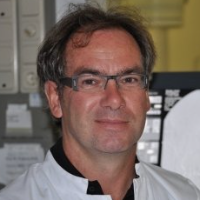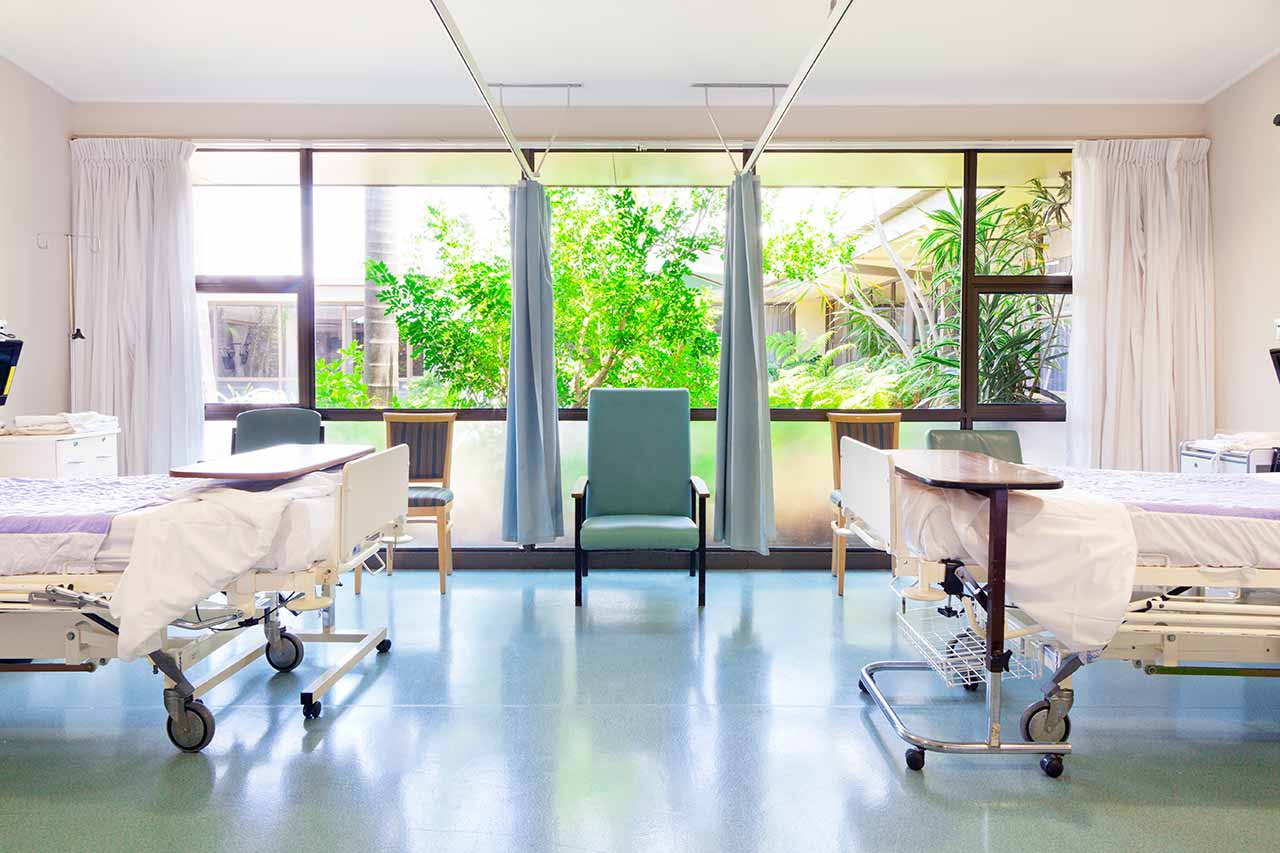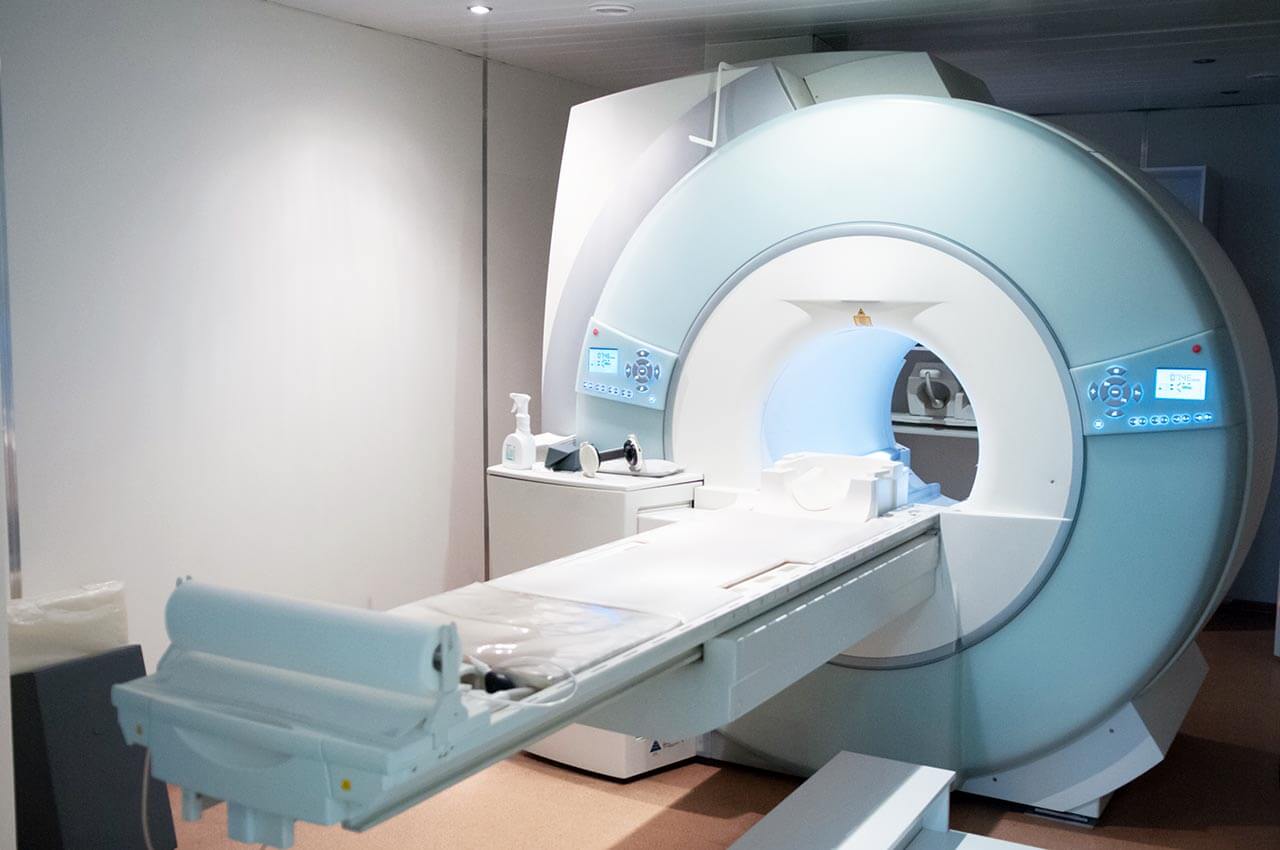
The program includes:
- Initial presentation in the hospital
- Clinical history taking
- Review of available medical records
- Physical examination
- Laboratory tests:
- Complete blood count
- General urine analysis
- Biochemical analysis of blood
- Tumor markers
- Inflammation indicators (CRP, ESR)
- Coagulogram
- Ultrasound scan
- CT scan / MRI
- Preoperative care
- Embolization or chemoembolization, 2 procedures
- Symptomatic treatment
- Cost of essential medicines
- Nursing services
- Elaboration of further recommendations
How program is carried out
During the first visit, the doctor will conduct a clinical examination and go through the results of the available diagnostic tests. After that, you will undergo the necessary additional examination, such as the assessment of liver and kidney function, ultrasound scan, CT scan and MRI. This will allow the doctor to determine which vessels are feeding the tumor and its metastases, as well as determine how well you will tolerate the procedure.
Chemoembolization begins with local anesthesia and catheterization of the femoral artery. The thin catheter is inserted through a few centimeters long incision of the blood vessel. The doctor gradually moves the catheter to the vessel feeding the primary tumor or its metastases. The procedure is carried out under visual control, an angiographic device is used for this. The vascular bed and the position of the catheter in it are displayed on the screen of the angiograph.
When the catheter reaches a suspected artery, a contrast agent is injected through it. Due to the introduction of the contrast agent, the doctor clearly sees the smallest vessels of the tumor and the surrounding healthy tissues on the screen of the angiograph. After that, he injects emboli into the tumor vessels through the same catheter.
Emboli are the spirals or the liquid microspheres. The type of embolus is selected individually, taking into account the diameter of the target vessel. When carrying out chemoembolization, a solution of a chemotherapy drug is additionally injected into the tumor vessel. Due to the subsequent closure of the vessel lumen with an embolus, the chemotherapy drug influences the tumor for a long time. In addition, the drug does not enter the systemic circulation, which allows doctors to use high doses of chemotherapeutic agents without the development of serious side effects. Chemoembolization leads to the destruction of the tumor or slowing down its progression.
After that, the catheter is removed from the artery. The doctor puts a vascular suture on the femoral artery and closes it with a sterile dressing. During chemoembolization, you will be awake. General anesthesia is not used, which significantly reduces the risks of the procedure and allows performing it on an outpatient basis, avoiding long hospital stay.
After the first procedure, you will stay under the supervision of an interventional oncologist and general practitioner. If necessary, you will receive symptomatic treatment. As a rule, a second chemoembolization procedure is performed in 3-5 days after the first one in order to consolidate the therapeutic effect. After that, you will receive recommendations for further follow-up and treatment.
Service
You may also book:
 BookingHealth Price from:
BookingHealth Price from:
About the department
The Department of Interventional Neuroradiology at the University Hospital Saarland Homburg offers the full range of services in the areas of its specialization. The medical facility provides imaging diagnostics and low-traumatic image-guided interventional treatment of nervous system diseases. The department's specialists have rich experience and exceptional professional skills in the field of interventional procedures for acute and chronic vascular diseases, such as ischemic strokes, brain hemorrhages, cerebral artery stenosis, brain aneurysms, and vascular malformations. The department's neuroradiologists cooperate closely with neurologists and neurosurgeons so that each patient receives an optimal treatment regimen based on the expert opinions of the specialists. The department's medical team has state-of-the-art computed tomography (CT), magnetic resonance imaging (MRI), and MR angiography systems that are actively used for diagnosing patients and therapeutic procedures. Medical care is provided in compliance with current clinical protocols. The department also offers many outpatient medical services, which is an advantage for many patients. The department is headed by Prof. Dr. med. Wolfgang Reith.
The department regularly admits a large number of patients with strokes. A stroke is an acute cerebral circulatory disorder that may occur due to stenosis, thrombosis, or a blood vessel rupture in the brain. Strokes refer to diseases that are characterized by a high level of mortality since the pathological condition develops unexpectedly for a person and, at the same time, very rapidly. The success of the medical care provided depends largely on its timeliness. When a patient is admitted to the department, they urgently undergo contrast-enhanced computed tomography of the brain. A CT scan allows doctors to determine the exact localization of the hemorrhage and its extent. The team of the department's neuroradiologists offers the following two modern methods of stroke treatment: lysis therapy and mechanical recanalization (mechanical thrombectomy). Lysis therapy consists of administering a special drug into the patient's bloodstream that dissolves a blood clot, which causes stenosis or thrombosis of blood vessels in the brain. This type of treatment is highly effective, but only if the procedure is performed no later than 3-4 hours after the onset of a stroke. In complex clinical cases of stroke, lysis therapy is often supplemented with catheter-based mechanical recanalization. During the procedure, the department's neuroradiologists insert a catheter into the femoral artery and advance it through the blood vessels to the arteries of the brain under imaging guidance. The specialists then remove the formed blood clot with a catheter, thereby restoring the patency of the lumen of the artery and eliminating impaired blood supply to the brain. The procedure of mechanical recanalization is well tolerated by patients and gives excellent results. The department's doctors regularly perform this catheter-based intervention so patients can be sure of a good therapeutic outcome and the safety of treatment.
Brain aneurysms are often encountered in the clinical practice of the department's medical team, so the specialists have the necessary experience and professional skills to treat this disease. A cerebral aneurysm is an abnormal bulge in the thin wall of a cerebral artery. The insidiousness of an aneurysm is that, in many cases, it does not cause any symptoms and a patient is not even aware of its presence. Brain aneurysms are often detected incidentally during diagnostic examinations for other pathologies. Large aneurysms and actively growing aneurysms, however, are rarely asymptomatic. In this case, a patient needs an examination, during which a doctor will be able to make an accurate diagnosis. Magnetic resonance angiography is used to confirm or exclude the diagnosis of a brain aneurysm. As for the treatment, there are several therapeutic options, such as active monitoring of the aneurysm, image-guided endovascular treatment, and open surgery. If the aneurysm is small, there are no signs of its growth, and the risk of its rupture is minimal, the patient simply needs to undergo regular imaging diagnostics. The department's specialists offer endovascular therapy, namely brain aneurysm endovascular embolization. The essence of the technique is to eliminate the aneurysm from the blood flow with the help of special microcoils or stents. The endovascular method eliminates the need for a craniotomy since surgeons approach the pathological focus through the femoral artery. Neuroradiologists deliver microcatheters along the vascular bed to the aneurysm under imaging guidance. A microcoil or a stent is inserted into the aneurysm through a microcatheter, which fills the cavity of the aneurysm and blocks the blood flow into it, due to which the therapeutic effect is achieved. Successful endovascular treatment eliminates the risk of the brain aneurysm rupture. Complex cases require open surgery, namely clipping, to treat aneurysms. Such surgical procedures are performed in cooperation with neurosurgeons.
An integral part of the work of the department's doctors is image-guided interventional pain management for patients with chronic back pain. Neuroradiologists have in their arsenal several techniques, such as facet joint infiltration, sacroiliac joint infiltration, and periradicular therapy. Each of these procedures involves the injection of painkillers with a thin needle directly into the pathological focus under the guidance of CT or MRI scans. Infiltration therapy is characterized by high accuracy and efficiency. A few hours after it, a patient does not experience any pain. In addition, the procedures can be repeated. This treatment is an excellent alternative for patients with chronic pain syndromes who do not respond to oral painkillers.
The department's main clinical activities include the following diagnostic and therapeutic options:
- Diagnostics
- Classical spinal X-ray scans
- Computed tomography of the brain and spine
- Magnetic resonance imaging of the brain and spine
- Fetal magnetic resonance imaging
- Magnetic resonance angiography
- Digital subtraction angiography
- Myelography
- Treatment
- Lysis therapy and mechanical recanalization (mechanical thrombectomy) for stroke
- Endovascular brain aneurysm embolization
- Endovascular treatment of vascular malformations (embolization)
- Balloon angioplasty and stent implantation for stenosis
- Other medical services
Curriculum vitae
Higher Education and Professional Career
- 1983 - 1984 Medicine studies at the Ludwig Maximilian University of Munich.
- 1985 Preliminary medical examination.
- 1986 1st State Exam.
- 1988 2nd State Exam.
- 1989 3rd State Exam.
- 02.1990 - 07.1991 Intern, Department of Neurology, University Hospital Heidelberg.
- 08.1991 - 12.1991 Fellow of the Department of Neurology, University Hospital Heidelberg.
- 1992 - 1997 Fellow, Neuroradiology, University Hospital Heidelberg.
- 07.1993 - 02.1994 Scientific internship in the USA, Medical School of Central Massachusetts, Worcester, USA.
- 01.1995 - 06.1995 Assistant Physician, focuses: Radiology and Oncology, German Cancer Research Center Heidelberg.
- 07.1995 - 07.1996 Assistant Physician, Department of Radiology, University Hospital Heidelberg.
- 12.1991 Thesis defense. Subject: "CO2 reactivity of the middle cerebral artery in carotid artery obstruction."
- 12.1996 Board certification in Diagnostic Radiology.
- 10.1997 Habilitation. Subject: "Perfusion and diffusion-weighted magnetic resonance imaging in early diagnosis of acute stroke".
- 01.1998 - 12.1999 Senior Physician of the Department of Neuroradiology, University Hospital RWTH Aachen.
- 02.2000 Head of the Department Interventional Neuroradiology, University Hospital Saarland Homburg.
- Since 2000 Co-Editor Radiologist, Springer-Verlag.
- Since 2003 Member of the Extended Council of the German Society for Neuroradiology.
Photo of the doctor: (c) Universitätsklinikum des Saarlandes
About hospital
The University Hospital Saarland Homburg is the largest hospital in the city of Homburg and the most important medical facility in the region. The hospital, which currently has 30 specialized departments and 20 institutes, was founded in 1947 and operates on the basis of Saarland University. The hospital plays a leading role in medical education, research, and medical care both in the state of Saarland and throughout Germany. With vast experience in serving foreign patients, the medical facility is also widely known in the international medical arena.
The pride of the hospital is state-of-the-art equipment that allows the doctors to perform high-precision comprehensive diagnostics and the most sparing treatment even if a patient has a severe pathology. Patients are offered innovative medicine based on the very latest scientific achievements. At the same time, the hospital offers many therapeutic methods that are used only in leading medical centers in Europe, including da Vinci robot-assisted surgery, CAR T-cell therapy, TAVI and MitraClip catheter-based procedures, innovative laser procedures, etc. Great importance is paid to ethical and social competence. The hospital is constantly improving the work of its medical personnel and infrastructure to provide medical services that meet the highest standards.
As a multidisciplinary medical complex, the hospital offers highly effective treatment of the full range of common diseases as well as rare and severe pathologies. The efforts of the medical staff, which includes over 600 doctors and 2,000 nurses, are focused on the patient and their unique needs and desires. The doctors always devote enough time to personal communication with their patients, provide them with moral support, and are sympathetic to every life situation.
Photo: (с) depositphotos
Accommodation in hospital
Patients rooms
The patients of the University Hospital Saarland Homburg live in comfortable single, double, and triple patient rooms with a modern design. Each room is equipped with an ensuite bathroom with a shower and a toilet, as well as everything else necessary: a comfortable bed, a bedside table, a TV, and a telephone. In addition, enhanced-comfort rooms and specially equipped rooms for people with disabilities are available for the patients.
Meals and Menus
The hospital offers healthy and delicious meals three times a day: buffet breakfast, dinner with a wide choice of dishes for every taste, and a light supper. The menu features dietary and vegetarian dishes. There is also a cafeteria on the territory where one can taste delicious dishes and have a cup of coffee, tea, or some refreshing drinks
Further details
The standard patient rooms include:
Religion
The hospital regularly hosts catholic and evangelical devine services. The services of representatives of other religions are available upon request.
Accompanying person
During an inpatient program, an accompanying person can stay with you in the patient room or in a hotel of your choice.
Hotel
During an outpatient program, you can stay in a hotel of your choice. The managers will help you choose the most suitable options.





